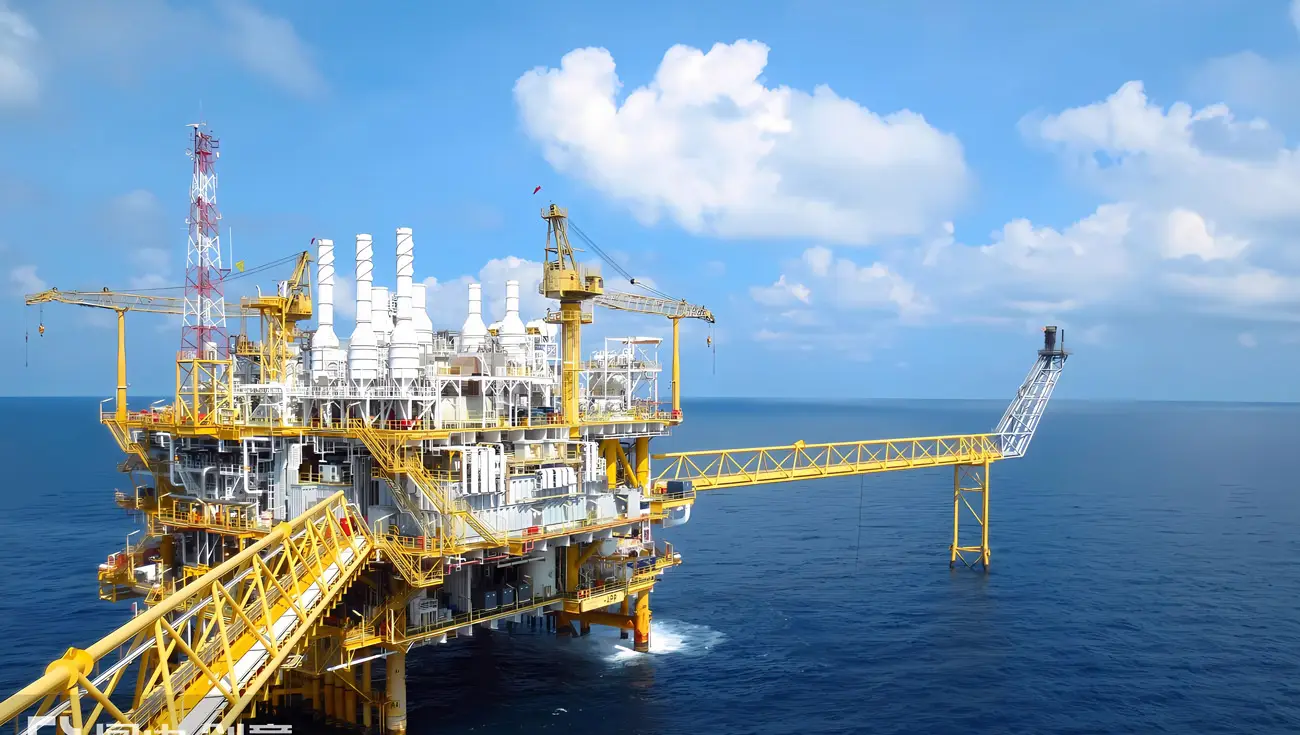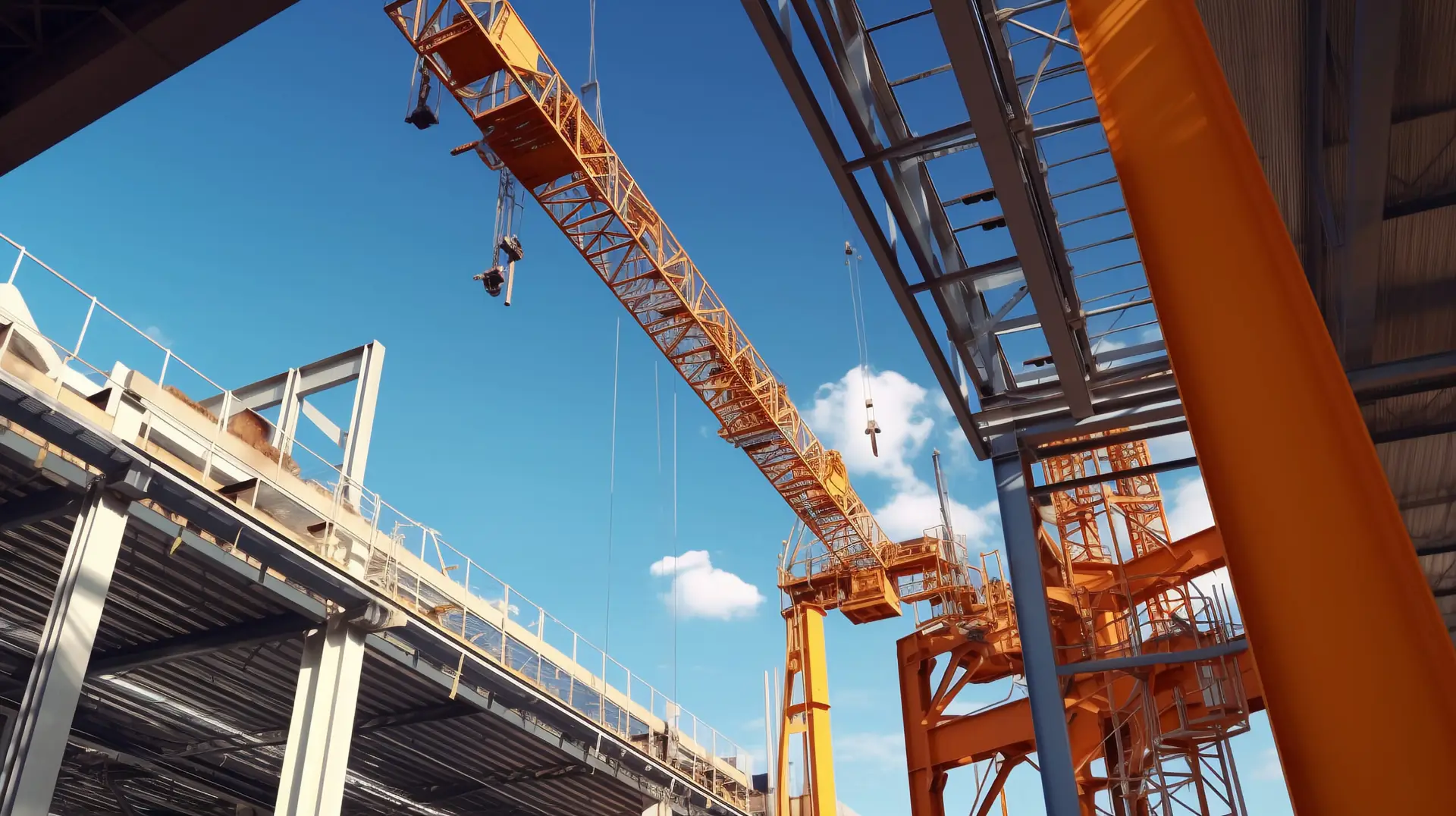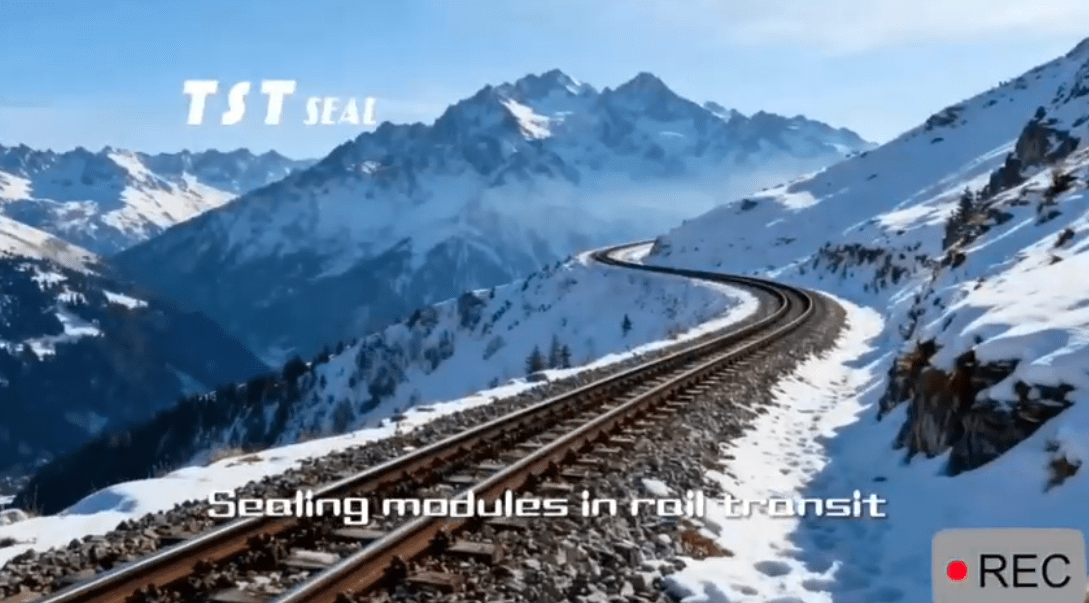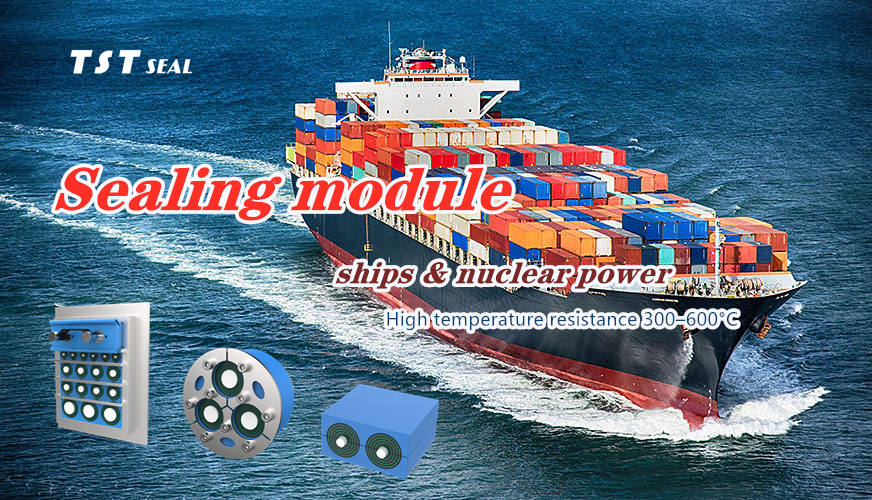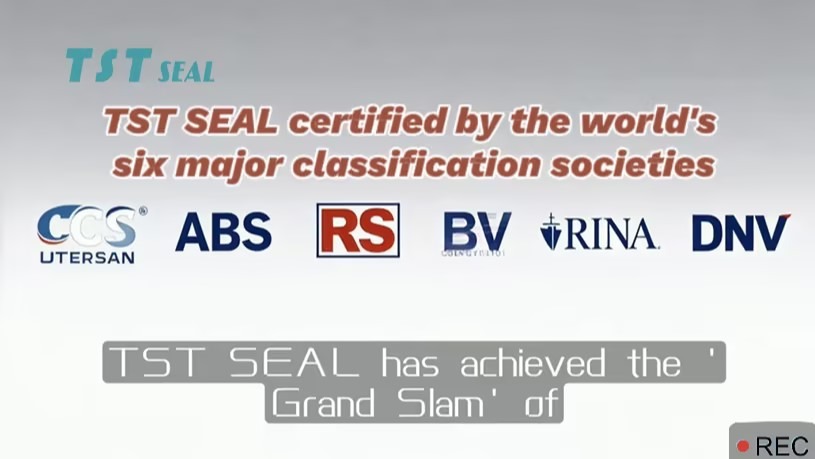
TST Seal :
- Fireproof
- Cable fixinAg
- Watertight
- Airtight
- Dustproof
- Noise reduction
- Vibration reduction
- Pressure resistance
- Corrosion resistance
- EMI/EMP
- Pest & rodent resistance
Related Articles
- circular seal (7)
- flange sealing (1)
- industrial sealing (2)
- MCT Transit Sealing System (7)
- rectangular seal (41)
- sealing modules (35)
- sealing solution (16)
TST SEAL MCT Transit Sealing System: A Small Module Provides Millimeter-Level Safety Protection for FPSOs
In FPSOs (Floating Production Storage and Offloading), core equipment for offshore oil and gas development, cable/pipeline transit sealing technology is the “invisible lifeline” that ensures the safe and efficient operation of the entire system. As key nodes connecting different functional compartments on the hull (such as the process area, engine room, and control room), cables and pipes must pass through structural interfaces such as bulkheads and decks. Failure of seals at these penetrations can not only lead to catastrophic oil and gas leaks, fires, and explosions, but also cause cascading risks such as seawater backflow, equipment corrosion, and cross-contamination of media, impacting production accuracy.
Deep in the South China Sea, a 333-meter-long, 60-meter-wide “floating giant”—the FPSO (Floating Production Storage and Offloading Vessel)—operates 24 hours a day. Like a mobile “offshore refinery,” it handles the entire process of subsea oil and gas extraction, processing, storage, and export, and is a core piece of equipment for my country’s deep-sea oil and gas development. However, what’s less well-known is that within this “steel fortress,” countless cables and pipelines penetrate bulkheads, decks, and compartments. Each such penetration carries hidden risks: high-temperature, high-pressure oil and gas leaks, seal failure caused by seawater corrosion, loosening caused by vibration and shock… Once these hazards erupt, production may be suspended for maintenance at best, or even lead to safety accidents at worst.
For FPSOs, the reliability of cable/pipe transit sealing technology directly determines whether the FPSO can safely, efficiently, and continuously complete oil and gas extraction, storage, and transmission tasks in the harsh marine environment far from land. It is a prime example of the “small components, big safety” principle in deepwater energy development.
TST SEAL MCT Transit Seal System
Using a “modular philosophy” to solve deepwater sealing challenges
As the environment shifts from “fixed on land” to “floating deep sea,” and from “single medium” to “multi-media coupling,” sealing technology must shift from “passive defense” to “active adaptation.” The TST SEAL MCT transit sealing system, centered around “modularity + customization,” utilizes structural innovation and functional integration to create an adjustable, adaptable, and long-lasting sealing system, providing a reliable solution for deep-sea sealing.
“Modular Philosophy”
How does the TST SEAL MCT transit sealing system solve the deep-sea sealing challenge?
Traditional sealing solutions rely on a “precision opening + rigid assembly” system. The TST SEAL MCT transit sealing system overcomes this limitation with its modular design, allowing for flexible combinations to accommodate a variety of scenarios. Let’s take a look at its advanced technology:
1. Core Frame: Durable 316L Stainless Steel
The frame of the TST SEAL MCT transit seal system is made of 316L stainless steel (containing 2-3% molybdenum), which can withstand:
Salt spray corrosion: No rust after a 1000-hour salt spray test (the industry standard is 720 hours), and no peeling after 30 years of deep-sea service;
High-pressure collapse resistance: Yield strength ≥ 220 MPa, capable of withstanding 20 MPa deep-sea hydrostatic pressure (equivalent to a depth of 2000 meters) with deformation < 0.1%;
Low-temperature toughness: No cracks after an ultra-low-temperature impact test at -196°C (common deep-sea temperatures of -2°C), preventing brittle fracture at low temperatures.
2. Sealing Core: The Versatile Adaptability of Self-Developed Ethylene Propylene Diene Monomer (EPDM)
The sealing module utilizes self-developed EPDM rubber, offering a variety of structural functions and sealing levels, allowing for flexible combinations and ease of use.
Dynamic Compensation: The EPDM’s elastic modulus automatically adjusts with pressure changes, absorbing shock from the heave and sinking of a semi-submersible FPSO (low-frequency vibration of 0.1-1 Hz) and equipment operation (high-frequency vibration of 10-500 Hz), maintaining a tight fit.
Multi-Media Blocking: The EPDM layer is both water- and air-tight (0.5 MPa airtight, reaching up to 0.6 MPa under special operating conditions), providing a dual barrier to prevent the leakage of seawater, oil and gas, and hazardous gases.
Wide Temperature Range: Remains elastic under temperatures ranging from -60°C to 120°C (fully covering deep-sea temperatures of -2°C and oil and gas temperatures of 120°C). Compression set is <10% (compared to the industry standard of 15%).
3. Installation Masterpiece: “Fool-Style” Fitting with a ±5mm Tolerance
Traditional sealing solutions rely on a “precision drilling + rigid assembly” system (requiring high-precision machining to ensure a perfect fit between the drilling and the seal, otherwise leakage can occur due to localized stress concentration). The TST SEAL MCT transit seal system frame overcomes this limitation through its innovative structural design: it supports bidirectional assembly, allowing for a ±5mm drilling tolerance. This feature is achieved through modular, non-destructive replacement and redundant space.
Shipyards no longer need expensive custom precision drilling; installation can be performed by hand cutting, reducing construction time by 30%.
For subsequent capacity expansion (such as laying 5G cables), only the spare module needs to be replaced, eliminating the need for new drilling, reducing O&M costs by 40%.
The TST SEAL MCT Transit Seal System’s “Deepwater Battlefield”
Which FPSO Areas Need It Most?
Theoretical performance must be verified in practice. The TST SEAL MCT Transit Seal System demonstrated robust protection in two typical scenarios:
The “Dynamic Heart” of a Semi-Submersible FPSO:
Power Tunnel Cable Transit
Part 1
Inside the power nacelle, 200 cables run from the engine room to the deck control room, fulfilling core functions for generator control and power transmission. Using traditional rubber gasket seals would result in leakage due to wave vibration, forcing the vessel to be shut down for maintenance and incurring direct economic losses.
TST SEAL After the MCT transit seal system was installed:
It was secured with a 316L stainless steel frame, and the EPDM module was customized according to the cable diameter (supporting variable diameters from 3 to 98 mm), perfectly adapting to various cable specifications.
The elastic seal layer absorbed 90% of heave vibrations, achieving zero leakage within one year after installation.
When 10 sensor cables were added later, the spare module was replaced in just two hours, without disrupting production.
The “Life and Death” of a Jack-Up FPSO
Legger Leg Lift Seal
Part 2
A jack-up FPSO “stands” on the seabed by leg lifting. The deck undergoes planar deformation of ≤10mm due to stress. Traditional seals, due to their rigid structure, often tear, leading to oil and gas leaks and even explosions.
The TST SEAL MCT transit seal system solution:
Modular stacking: By increasing or decreasing the number of core layers, the deck can compensate for height differences within ±5mm.
Elastomeric support: The highly elastic EPDM rubber core absorbs stress caused by minor deck deformation, preventing stress concentration.
Integrated A-60 fire resistance (60 minutes fire resistance) + Ex d IIC Gb explosion-proof (blocks oil and gas explosions), providing a “double insurance” for pile leg operations.
Choose the TST SEAL MCT Transit Seal System
Get More Than Just a “Sealing”
For shipowners and operators, the value of the TST SEAL MCT Transit Seal System goes far beyond simply being “leak-proof”:
Improved Safety: Certified by five international classification societies (CCS, RS, ABS, BV, and RINA) (A-60 fire resistance, Ex explosion-proof), it helps reduce the risk of fire/explosion.
Cost Optimization: Life Cycle Cost (LCC) is more advantageous than traditional solutions (initial purchase cost is slightly higher, but operation and maintenance costs are reduced by approximately 55%).
Extended Lifespan: Designed for 30 years (compared to 5-8 years for traditional rubber seals), it reduces the need for more than three major overhauls and seal replacements at sea.
Future Compatibility: 20% spare modules are reserved, allowing for easy adaptation to FPSO digital upgrades (such as adding hydrogen sensors and intelligent monitoring circuits).
From yachts to cruise ships, and from traditional oil and gas to green energy (such as converting FPSOs to methanol production), TST The SEAL transit sealing system is no longer just a single component; it is a critical element in ensuring the safe operation of floating oilfields. Only when every transit point is a reliable node can a comprehensive safety barrier be established for the “steel giant.”
The TST SEAL MCT transit sealing system, with its modular, customizable, and long-life innovations, effectively solves the sealing challenges of FPSOs. Leveraging domestically produced technological strength, it provides a viable solution for global deepwater development.
Free Sample | Customization Supported | Global Sales | Factory Direct Sales | Agents Welcome (Email:alixich@tstcables.com)

